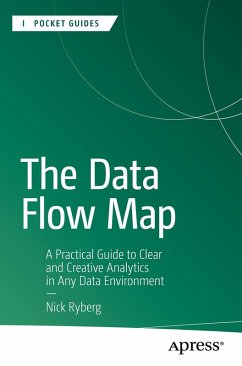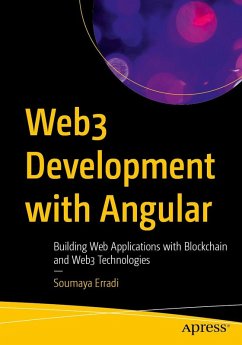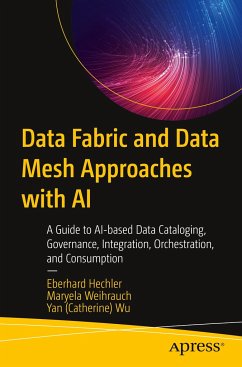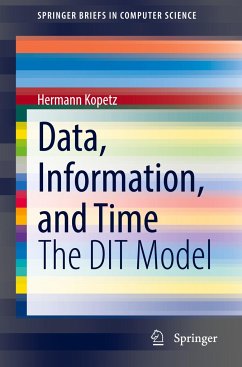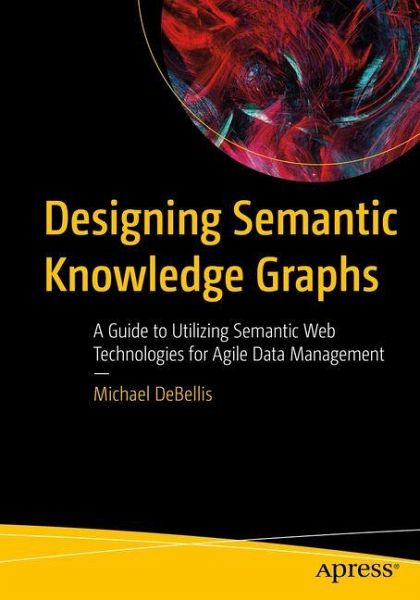
Designing Semantic Knowledge Graphs
A Guide to Utilizing Semantic Web Technologies for Agile Data Management
Versandkostenfrei!
Versandfertig in 6-10 Tagen
46,99 €
inkl. MwSt.

PAYBACK Punkte
23 °P sammeln!
Semantic Web technologies such as OWL, RDF/RDFS, SPARQL, SHACL, and SWRL offer powerful tools for managing data in more flexible, meaningful, and scalable ways. As organizations increasingly adopt modern data architectures like Data Mesh, Data Fabric, and Data Lakes, Semantic Knowledge Graphs can serve as a unifying layer making data easier to integrate, validate, and reason over.Yet many teams hesitate to adopt these technologies, often viewing them as overly complex or academic. This book aims to change that perception by showing how these tools can be used practically and effectively in rea...
Semantic Web technologies such as OWL, RDF/RDFS, SPARQL, SHACL, and SWRL offer powerful tools for managing data in more flexible, meaningful, and scalable ways. As organizations increasingly adopt modern data architectures like Data Mesh, Data Fabric, and Data Lakes, Semantic Knowledge Graphs can serve as a unifying layer making data easier to integrate, validate, and reason over.
Yet many teams hesitate to adopt these technologies, often viewing them as overly complex or academic. This book aims to change that perception by showing how these tools can be used practically and effectively in real-world systems. From constraint validation to domain modeling to query and inference, you'll learn how Semantic Web standards can help you work with messy, evolving, and interconnected data.
Designing Semantic Knowledge Graphs is a hands-on guide for software engineers, architects, and data professionals who want to design and build semantic models that align with modern enterprise needs. You'll learn how to bridge domain models with real data, create agile ontologies that evolve with your systems, and automate the transformation of existing data sources into knowledge graph form. Along the way, you ll explore ontology design patterns, leverage validation rules with SHACL, and integrate your knowledge graph with tools like LLMs and SPARQL for powerful query and reasoning capabilities.
All techniques are illustrated using free and widely used tools like Protégé and the community edition of AllegroGraph.
You Will:
Learn how Semantic Web standards like OWL, RDF, SPARQL, SHACL, and SWRL fit into modern data architectureUnderstand techniques for modeling domains that balance top-down structure with bottom-up data realities
Yet many teams hesitate to adopt these technologies, often viewing them as overly complex or academic. This book aims to change that perception by showing how these tools can be used practically and effectively in real-world systems. From constraint validation to domain modeling to query and inference, you'll learn how Semantic Web standards can help you work with messy, evolving, and interconnected data.
Designing Semantic Knowledge Graphs is a hands-on guide for software engineers, architects, and data professionals who want to design and build semantic models that align with modern enterprise needs. You'll learn how to bridge domain models with real data, create agile ontologies that evolve with your systems, and automate the transformation of existing data sources into knowledge graph form. Along the way, you ll explore ontology design patterns, leverage validation rules with SHACL, and integrate your knowledge graph with tools like LLMs and SPARQL for powerful query and reasoning capabilities.
All techniques are illustrated using free and widely used tools like Protégé and the community edition of AllegroGraph.
You Will:
Learn how Semantic Web standards like OWL, RDF, SPARQL, SHACL, and SWRL fit into modern data architectureUnderstand techniques for modeling domains that balance top-down structure with bottom-up data realities



